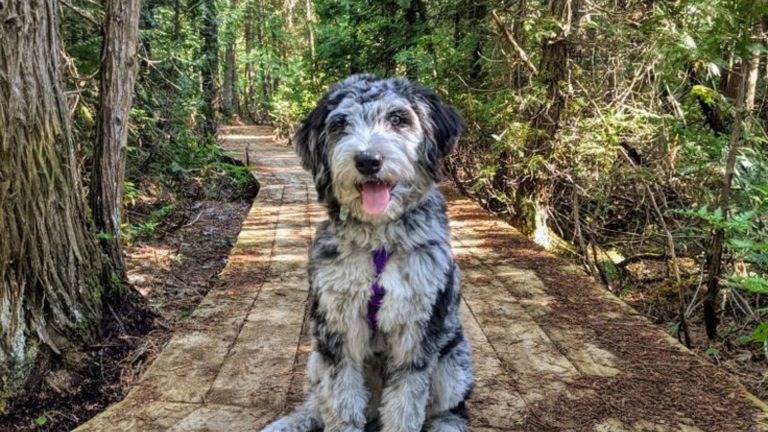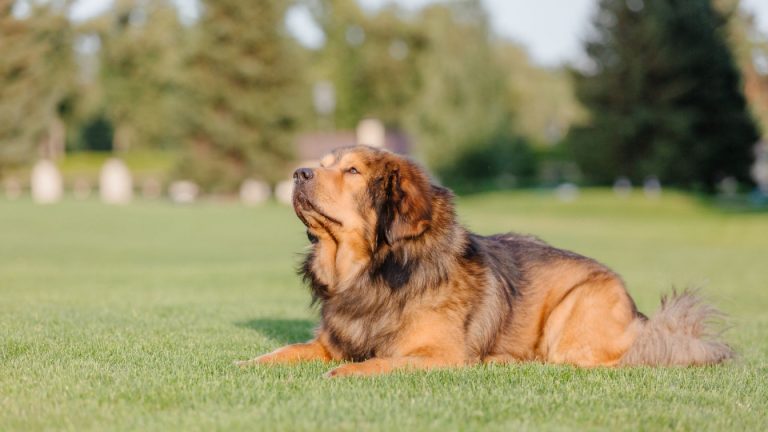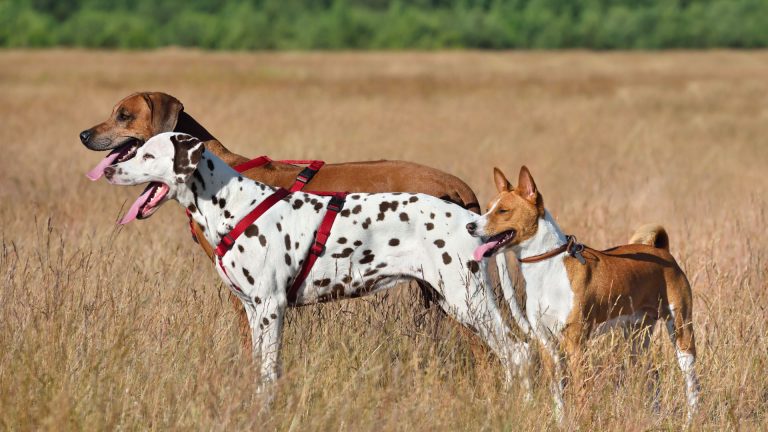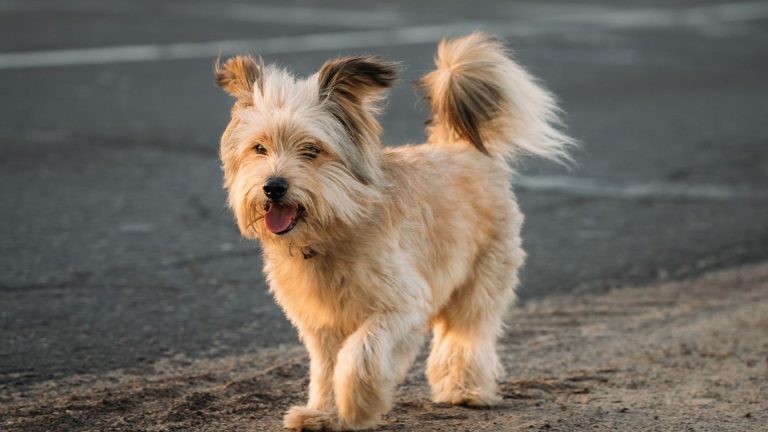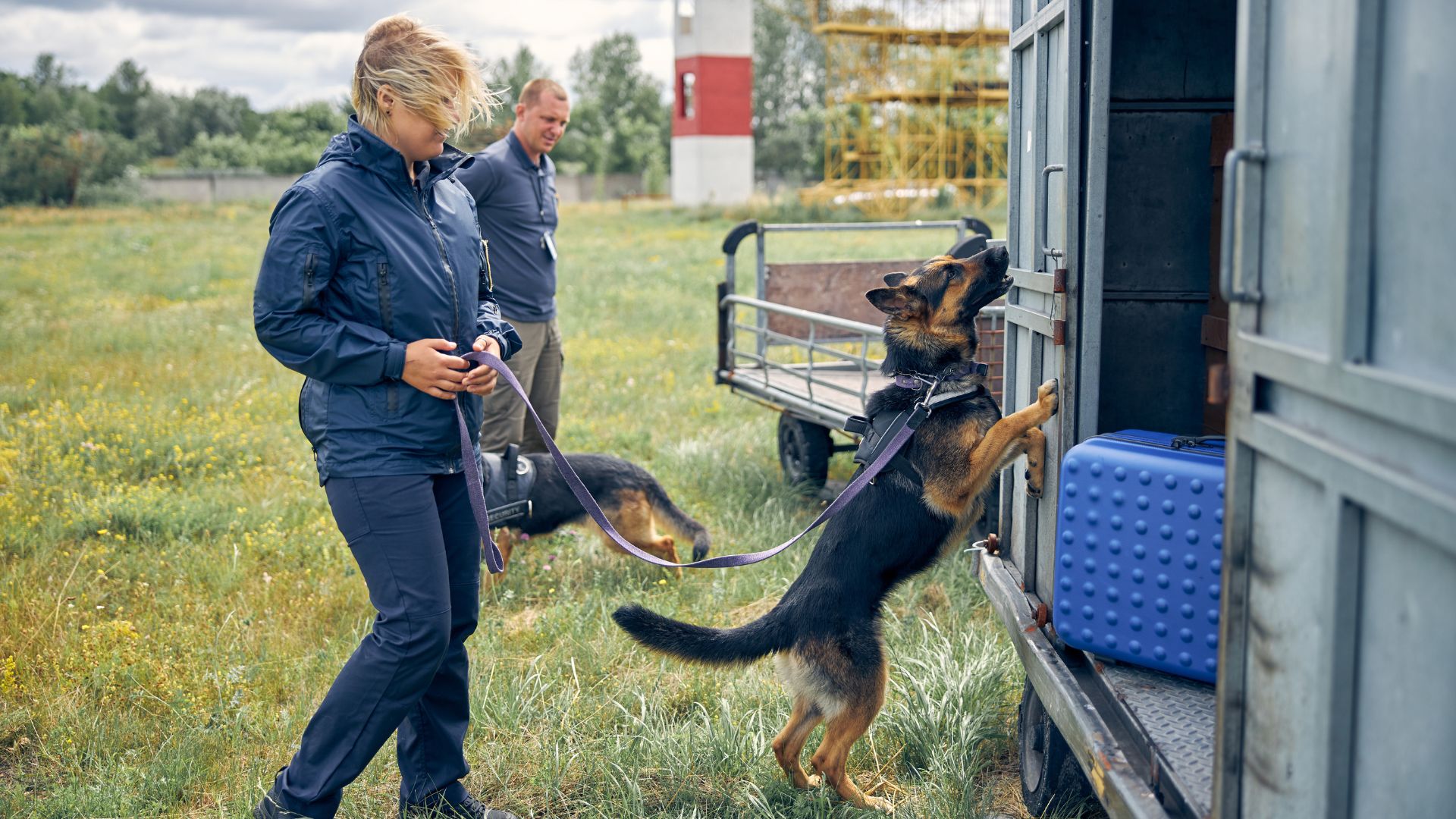
Contents
Police dogs play a crucial role in law enforcement. “Top 10 Police Dog Breeds: Best Canines for Law Enforcement” showcases how these trained canines assist officers in various tasks. They sniff out drugs, track criminals, and protect their handlers. Their presence alone can deter crime.
Choosing the right breed for police work is essential. Not all dogs possess the qualities needed for these demanding tasks. The best police dogs are intelligent, obedient, and physically fit. They must also have a strong work drive and the ability to remain calm under pressure.
Different breeds excel in different roles. Some are better at tracking, while others are skilled in detection. The right breed can significantly enhance a law enforcement agency’s effectiveness. Properly selected and trained, police dogs become invaluable partners in fighting crime.
This article explores the top 10 police dog breeds. Each breed has unique strengths and abilities suited for specific law enforcement tasks. Understanding these breeds helps in making informed decisions when selecting a police dog. Let’s delve into the best canines for law enforcement and their remarkable contributions.
#1. German Shepherd
The German Shepherd originated in Germany in the late 19th century. Max von Stephanitz, a German cavalry officer, is credited with developing the breed. He aimed to create a versatile working dog, and his efforts paid off. The breed quickly gained popularity for its intelligence and work ethic.

Physical Characteristics
German Shepherds are medium to large-sized dogs. Males typically weigh between 65-90 pounds, while females weigh 50-70 pounds. They have a strong, muscular build and a dense double coat. Their coat colors vary, including black and tan, black and red, or sable. Their ears are erect, and their eyes are almond-shaped and dark.
Traits That Make Them Ideal for Police Work
Several traits make German Shepherds ideal for police work. They are highly intelligent, which allows them to learn and execute complex tasks. Their obedience and eagerness to please their handlers make training more effective. German Shepherds are also known for their courage and loyalty. They remain calm under pressure and can make quick decisions. Additionally, their keen sense of smell and tracking abilities are invaluable in law enforcement.
Common Roles in Law Enforcement
German Shepherds excel in various law enforcement roles. They are often used for tracking suspects and locating missing persons. Their keen sense of smell makes them excellent at detecting drugs and explosives. They also serve as patrol dogs, providing protection and support to their handlers. In crowd control situations, their imposing presence can help maintain order. Furthermore, German Shepherds are used in search and rescue missions due to their agility and endurance.
Overall, the German Shepherd’s versatility and range of skills make it one of the most popular and effective breeds in law enforcement. Their unwavering dedication and capabilities ensure they remain a top choice for police work worldwide.
#2. Belgian Malinois
The Belgian Malinois originated in Belgium in the late 19th century. Named after the city of Malines, these dogs were initially bred as herding dogs. Over time, their intelligence and agility made them popular for various working roles. Today, they are highly regarded for their capabilities in police and military work.
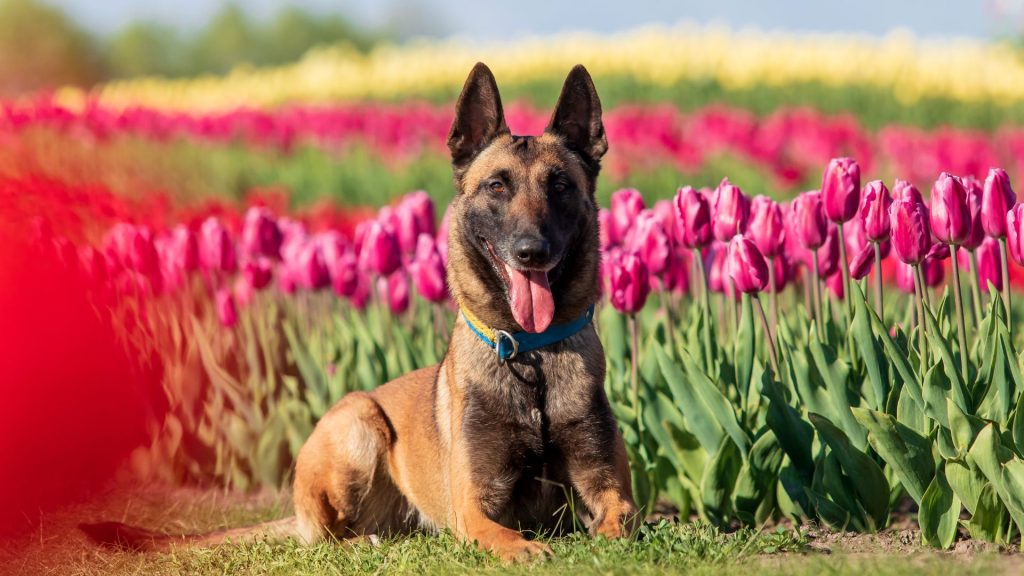
Physical Characteristics
Belgian Malinois are medium-sized dogs with a strong, athletic build. Males typically weigh between 60-80 pounds, while females weigh 40-60 pounds. They have a short, straight coat that is usually fawn to mahogany with a black mask and ears. Their eyes are dark and almond-shaped, giving them a keen, alert expression. Their ears are erect, contributing to their sharp, attentive appearance.
Traits That Make Them Ideal for Police Work
Several traits make Belgian Malinois ideal for police work. They are highly intelligent and quick learners, which allows them to master complex tasks rapidly. Their high energy levels and work drive make them tireless workers, always eager to perform. Belgian Malinois are also known for their agility and speed, making them excellent for pursuits and quick maneuvers. Their strong protective instincts and loyalty to their handlers ensure they can be relied upon in high-pressure situations. Additionally, their acute sense of smell and keen observation skills make them effective in detection and surveillance roles.
Common Roles in Law Enforcement
Belgian Malinois are versatile and excel in various law enforcement roles. They are often used in detection work, including sniffing out drugs, explosives, and other contraband. Their agility and speed make them ideal for tracking suspects and search and rescue operations. Belgian Malinois also serve as patrol dogs, providing protection and assistance to officers. Their presence can deter criminal activity and help maintain order in crowd control situations. In the military, they are used for their explosive detection and tactical support capabilities.
Overall, the Belgian Malinois’ combination of intelligence, agility, and work ethic makes them a top choice for law enforcement agencies. Their exceptional abilities and unwavering dedication ensure they play a critical role in maintaining safety and security.
#3. Labrador Retriever
The Labrador Retriever originated in Newfoundland, Canada, in the early 19th century. Initially known as the St. John’s dog, they were used by fishermen to retrieve nets and catch fish. English nobles brought them to Britain, where they were refined into the breed we know today. Their intelligence and versatility quickly made them popular working dogs.
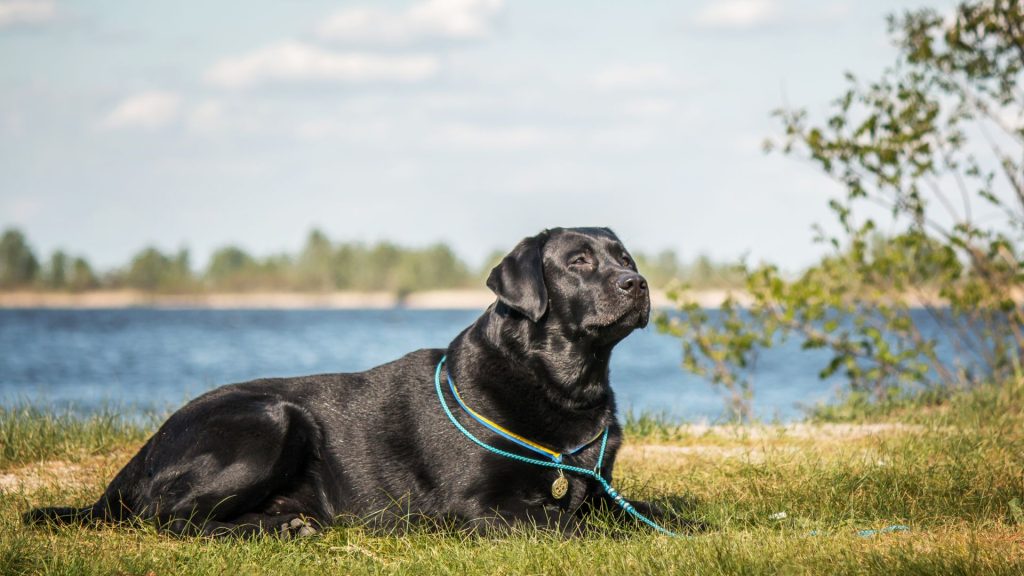
Physical Characteristics
Labrador Retrievers are medium to large-sized dogs. Males typically weigh between 65-80 pounds, while females weigh 55-70 pounds. They have a strong, athletic build with a dense, water-resistant double coat. Their coat colors are usually black, yellow, or chocolate. Labradors have a broad head, expressive eyes, and a distinctive “otter” tail that aids in swimming.
Traits That Make Them Ideal for Police Work
Labrador Retrievers possess several traits that make them ideal for police work. They are highly intelligent and quick learners, which enables them to excel in training. Labradors are known for their friendly and even-tempered nature, making them easy to handle and reliable in various situations. Their strong sense of smell and natural retrieving instincts are invaluable for detection tasks. Additionally, their high energy levels and stamina make them capable of performing long, demanding tasks.
Common Roles in Law Enforcement
Labrador Retrievers are primarily used in detection roles within law enforcement. Their keen sense of smell makes them excellent at detecting drugs, explosives, and other contraband. They are also employed in search and rescue operations, using their tracking abilities to locate missing persons. Labradors’ friendly demeanor makes them ideal for community engagement and therapy work within police departments.
Overall, the Labrador Retriever’s intelligence, versatility, and friendly nature make it a valuable asset in law enforcement. Their exceptional detection skills and reliable temperament ensure they perform effectively in various roles.
#4. Dutch Shepherd
The Dutch Shepherd originated in the Netherlands in the 19th century. Initially bred for herding sheep and cattle, they were prized for their versatility and work ethic. Farmers relied on them for various tasks, including guarding and pulling carts. Over time, their intelligence and adaptability made them suitable for police and military work.
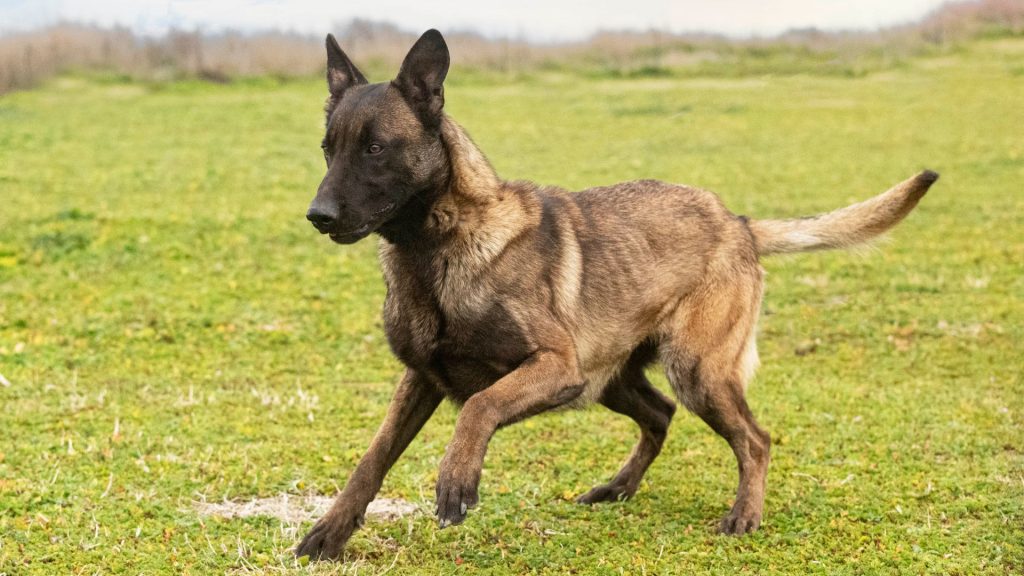
Physical Characteristics
Dutch Shepherds are medium-sized dogs with a sturdy, muscular build. Males typically weigh between 50-70 pounds, while females weigh 40-60 pounds. They have a distinctive brindle coat that can be short, long, or rough. Their coat colors range from gold to silver brindle. Dutch Shepherds have a well-proportioned body, with erect ears and a strong, expressive face.
Traits That Make Them Ideal for Police Work
Several traits make Dutch Shepherds ideal for police work. They are highly intelligent and quick learners, making them easy to train for complex tasks. Their strong work drive and high energy levels ensure they remain focused and diligent in their duties. Dutch Shepherds are known for their loyalty and protective instincts, which make them reliable partners for police officers. Their agility and athleticism allow them to perform various tasks, from tracking to apprehending suspects. Additionally, their keen sense of smell and observation skills enhance their effectiveness in detection roles.
Common Roles in Law Enforcement
Dutch Shepherds excel in several law enforcement roles. They are often used for tracking suspects and locating missing persons due to their strong tracking abilities. Their keen sense of smell makes them effective in detecting drugs, explosives, and other contraband. Dutch Shepherds also serve as patrol dogs, providing protection and support to their handlers. Their agility and endurance make them suitable for search and rescue missions. In crowd control situations, their presence can help maintain order and deter criminal activity.
Overall, the Dutch Shepherd’s intelligence, versatility, and dedication make it a valuable asset in law enforcement. Their exceptional abilities ensure they perform effectively in various roles, contributing to the safety and security of communities.
#5. Bloodhound
The Bloodhound is an ancient breed, with origins tracing back to medieval France. Monks in the Saint-Hubert Monastery are credited with refining the breed. Bloodhounds were brought to England and further developed for tracking and hunting. Their incredible scent-tracking abilities made them invaluable for trailing game and later, for law enforcement purposes.
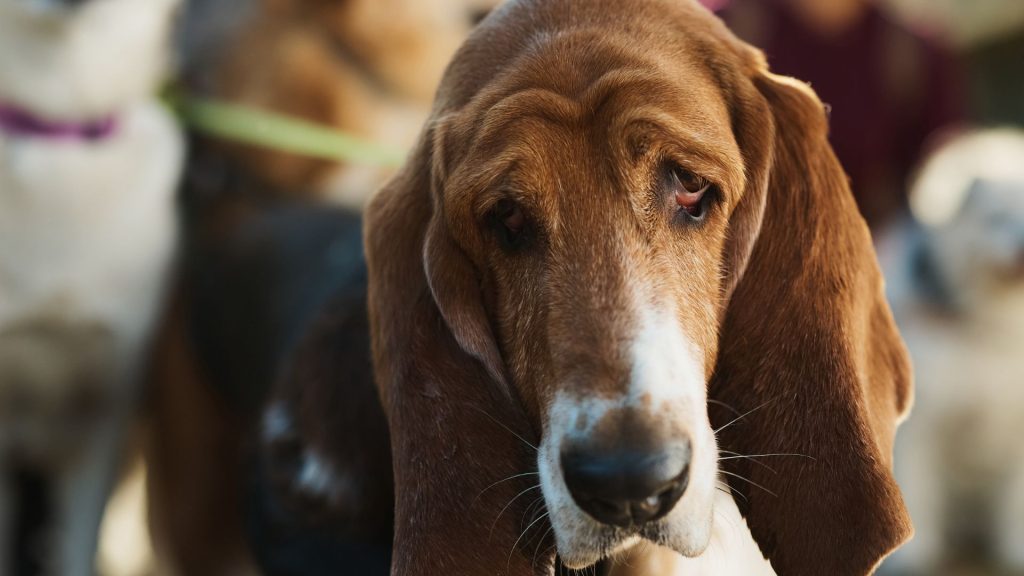
Physical Characteristics
Bloodhounds are large, powerful dogs. Males typically weigh between 90-110 pounds, while females weigh 80-100 pounds. They have a distinctive appearance with loose, wrinkled skin and long, drooping ears. Their coat is short and dense, usually in black and tan, liver and tan, or red. Bloodhounds have deep-set eyes and a pronounced sense of smell, with more olfactory receptors than any other breed.
Traits That Make Them Ideal for Police Work
Bloodhounds possess several traits that make them ideal for police work. Their sense of smell is unparalleled, allowing them to track scents over long distances and extended periods. Bloodhounds are also known for their persistence and determination. Once on a trail, they remain focused and tenacious until they find their target. Their gentle and friendly nature makes them easy to handle, and they work well with their handlers. Additionally, Bloodhounds are highly intelligent and capable of learning and executing complex tracking tasks.
Common Roles in Law Enforcement
Bloodhounds are primarily used in tracking and search and rescue operations within law enforcement. Their exceptional scent-tracking abilities make them indispensable for locating missing persons, fugitives, and evidence. Bloodhounds are often called upon to follow trails that are days or even weeks old, demonstrating their impressive olfactory skills. Their ability to work in various terrains and conditions further enhances their effectiveness in these roles.
Overall, the Bloodhound’s unmatched tracking abilities, persistence, and gentle temperament make it a valuable asset in law enforcement. Their contributions to search and rescue operations and tracking missions are crucial in solving cases and ensuring public safety.
#6. Rottweiler
The Rottweiler’s history dates back to ancient Rome, where they were used as herding and guard dogs. They accompanied Roman legions on their journeys, protecting livestock and camps. The breed was later refined in the German town of Rottweil, where it was used for herding cattle and pulling carts. Today, Rottweilers are known for their strength and reliability in various working roles, including police work.

Physical Characteristics
Rottweilers are large, powerful dogs with a robust and muscular build. Males typically weigh between 95-135 pounds, while females weigh 80-100 pounds. They have a short, dense coat that is black with distinct rust markings on the face, chest, and legs. Rottweilers have a broad head, strong jaws, and dark, expressive eyes. Their overall appearance exudes strength and confidence.
Traits That Make Them Ideal for Police Work
Several traits make Rottweilers ideal for police work. They are highly intelligent and capable of learning complex commands quickly. Rottweilers are known for their courage and protective instincts, making them reliable in high-pressure situations. Their strong physical presence and strength make them effective in apprehending suspects and controlling crowds. Additionally, Rottweilers are loyal and obedient, forming strong bonds with their handlers. Their calm and confident demeanor allows them to remain composed in various environments.
Common Roles in Law Enforcement
Rottweilers excel in several law enforcement roles. They are often used as patrol dogs, providing protection and support to officers. Their strength and size make them effective in apprehending suspects and controlling hostile situations. Rottweilers are also employed in search and rescue operations, utilizing their keen sense of smell and determination to locate missing persons. Additionally, their protective instincts and loyalty make them suitable for guarding and security tasks.
Overall, the Rottweiler’s intelligence, strength, and loyalty make it a valuable asset in law enforcement. Their ability to perform various tasks with confidence and reliability ensures they contribute significantly to public safety and security.
#7. Doberman Pinscher
The Doberman Pinscher originated in Germany in the late 19th century. Karl Friedrich Louis Dobermann, a tax collector, developed the breed to create a loyal and protective companion. He aimed to combine strength, intelligence, and loyalty. The breed quickly gained popularity for its exceptional qualities, making it suitable for various roles, including police work.
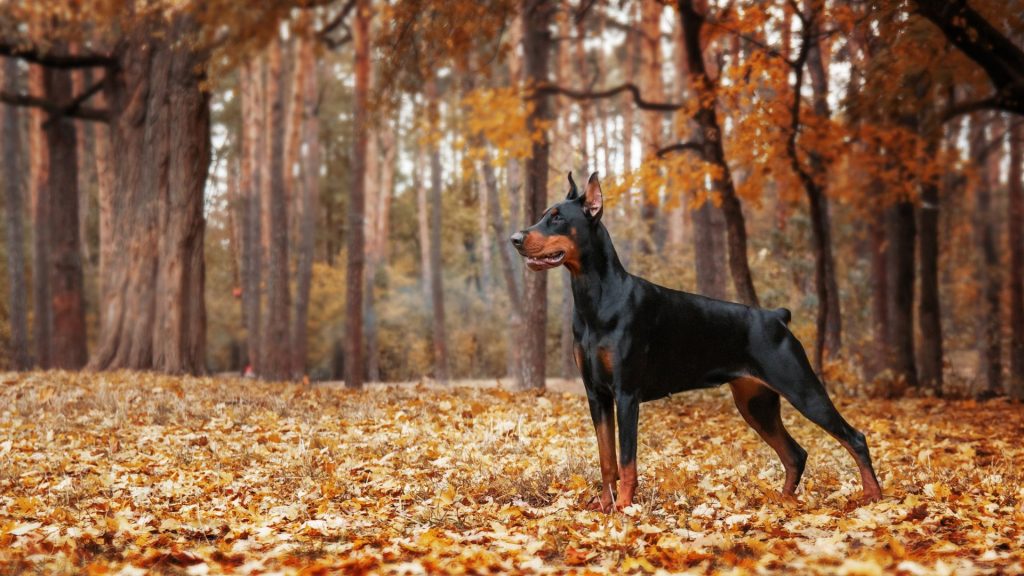
Physical Characteristics
Doberman Pinschers are medium to large-sized dogs with a sleek, muscular build. Males typically weigh between 75-100 pounds, while females weigh 60-90 pounds. They have a short, smooth coat that comes in colors such as black, blue, red, and fawn, often with rust markings. Dobermans have a wedge-shaped head, almond-shaped eyes, and naturally erect ears, although they are often cropped. Their overall appearance is elegant and athletic.
Traits That Make Them Ideal for Police Work
Doberman Pinschers possess several traits that make them ideal for police work. They are highly intelligent and quick learners, enabling them to master complex tasks efficiently. Their loyalty and protective nature make them reliable partners for police officers. Dobermans are known for their alertness and strong work ethic, ensuring they remain focused and diligent in their duties. Their agility and speed allow them to perform various tasks, from tracking suspects to apprehending criminals. Additionally, their strong sense of smell enhances their effectiveness in detection roles.
Common Roles in Law Enforcement
Doberman Pinschers excel in several law enforcement roles. They are often used as patrol dogs, providing protection and support to their handlers. Their agility and speed make them ideal for tracking suspects and search and rescue operations. Dobermans are also effective in detecting drugs, explosives, and other contraband, thanks to their keen sense of smell. Their imposing presence and strong protective instincts make them suitable for crowd control and guarding duties.
Overall, the Doberman Pinscher’s intelligence, agility, and loyalty make it a valuable asset in law enforcement. Their exceptional abilities and dedication ensure they perform effectively in various roles, contributing to the safety and security of communities.
#8. Boxer
The Boxer originated in Germany in the late 19th century. Developed by crossing the now-extinct Bullenbeisser with the English Bulldog, the breed was initially used for hunting and bull-baiting. Over time, Boxers were refined to be more suitable for companionship and work, including roles in police and military service due to their versatility and strong work ethic.
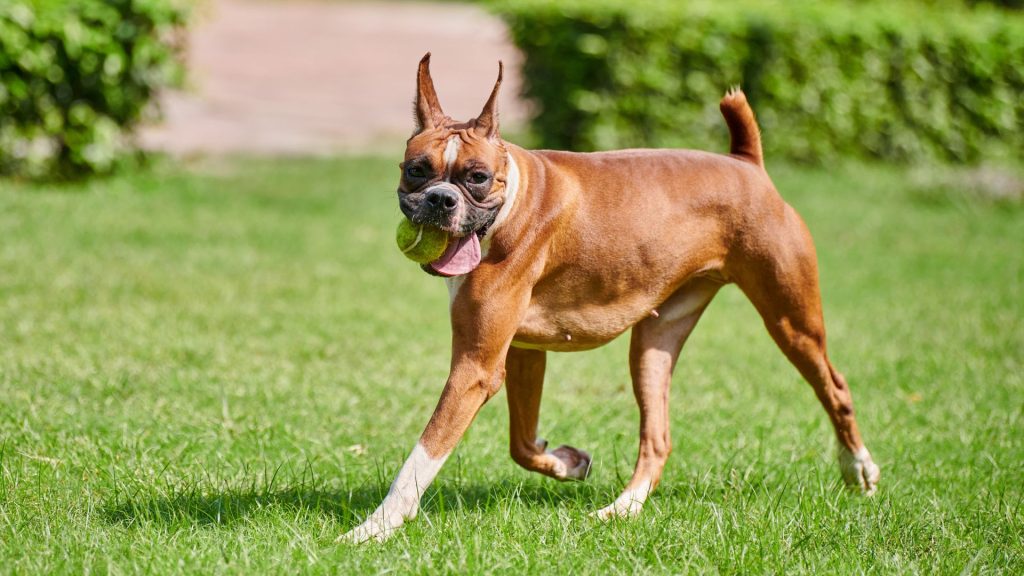
Physical Characteristics
Boxers are medium to large-sized dogs with a strong, muscular build. Males typically weigh between 65-80 pounds, while females weigh 50-65 pounds. They have a short, smooth coat that comes in fawn, brindle, or white, often with white markings. Boxers have a distinctive square-shaped head with a strong jaw and a blunt muzzle. Their ears are naturally floppy but are sometimes cropped, and they have expressive, dark eyes.
Traits That Make Them Ideal for Police Work
Boxers possess several traits that make them ideal for police work. They are highly intelligent and quick learners, which allows them to excel in training. Boxers are known for their boundless energy and enthusiasm, making them tireless workers. Their courage and protective instincts ensure they remain reliable in high-pressure situations. Additionally, Boxers are known for their loyalty and strong bond with their handlers. Their agility and strength make them suitable for various physical tasks, while their alert nature helps them stay vigilant.
Common Roles in Law Enforcement
Boxers excel in several law enforcement roles. They are often used in detection work, such as sniffing out drugs and explosives, due to their keen sense of smell. Their agility and speed make them effective in tracking suspects and performing search and rescue operations. Boxers are also used as patrol dogs, providing protection and assistance to their handlers. Their strong presence and protective nature make them suitable for crowd control and security duties.
Overall, the Boxer’s intelligence, energy, and loyalty make it a valuable asset in law enforcement. Their versatility and dedication ensure they perform effectively in various roles, contributing to public safety and security.
#9. Giant Schnauzer
The Giant Schnauzer originated in Germany in the 17th century. Initially bred for driving cattle and guarding farms, they were developed from the Standard Schnauzer, crossed with larger breeds like the Great Dane and Bouvier des Flandres. Over time, their intelligence and protective instincts made them suitable for roles in police and military work.
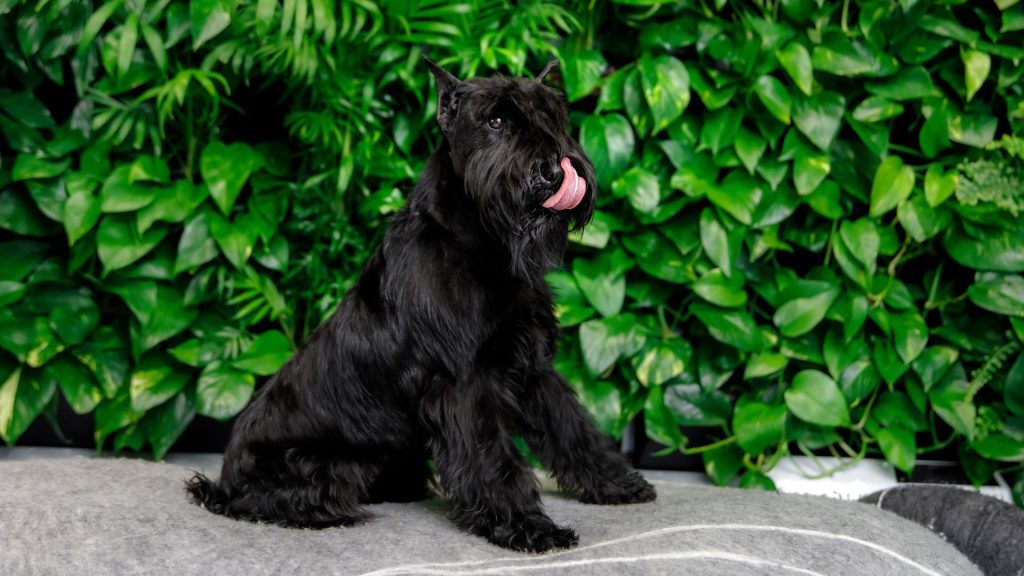
Physical Characteristics
Giant Schnauzers are large, powerful dogs with a robust and muscular build. Males typically weigh between 60-85 pounds, while females weigh 55-75 pounds. They have a dense, wiry coat that is usually solid black or pepper and salt. Giant Schnauzers have a distinctive, expressive face with bushy eyebrows and a beard. Their ears are naturally floppy but are often cropped, and they have a strong, rectangular head with dark, alert eyes.
Traits That Make Them Ideal for Police Work
Several traits make Giant Schnauzers ideal for police work. They are highly intelligent and quick learners, capable of mastering complex tasks and commands. Giant Schnauzers are known for their loyalty and protective nature, making them reliable partners for police officers. Their strong work drive and high energy levels ensure they remain focused and diligent in their duties. Additionally, their agility and strength make them suitable for various physical tasks, from tracking to apprehending suspects. Their keen sense of smell and alert nature enhance their effectiveness in detection roles.
Common Roles in Law Enforcement
Giant Schnauzers excel in several law enforcement roles. They are often used as patrol dogs, providing protection and support to officers. Their agility and strength make them effective in tracking suspects and search and rescue operations. Giant Schnauzers are also employed in detecting drugs, explosives, and other contraband, utilizing their keen sense of smell. Their imposing presence and protective instincts make them suitable for crowd control and guarding duties.
Overall, the Giant Schnauzer’s intelligence, agility, and loyalty make it a valuable asset in law enforcement. Their exceptional abilities and dedication ensure they perform effectively in various roles, contributing significantly to public safety and security.
#10. American Pit Bull Terrier
The American Pit Bull Terrier (APBT) originated in the United States in the 19th century. Developed from Old English Bulldogs and Terriers, they were initially bred for bull-baiting and later for farm work and companionship. Despite their controversial reputation, their strength, agility, and intelligence have made them valuable in various working roles, including police work.
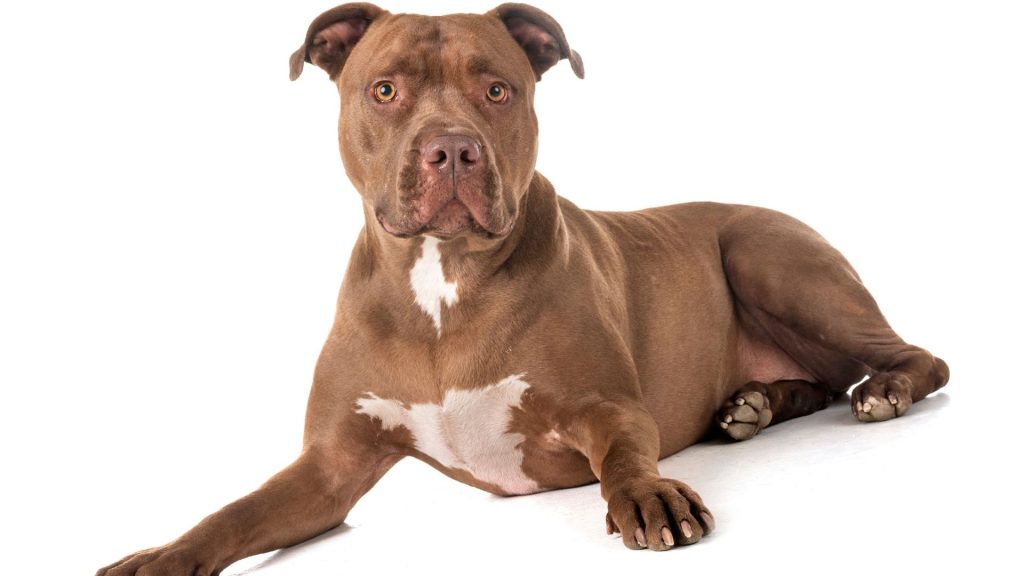
Physical Characteristics
American Pit Bull Terriers are medium-sized dogs with a muscular and athletic build. Males typically weigh between 35-60 pounds, while females weigh 30-50 pounds. They have a short, smooth coat that comes in various colors, including brindle, black, white, blue, and red. APBTs have a broad head, strong jaw, and expressive, almond-shaped eyes. Their ears are naturally floppy but are sometimes cropped, and they have a confident and powerful stance.
Traits That Make Them Ideal for Police Work
Several traits make American Pit Bull Terriers ideal for police work. They are highly intelligent and quick learners, which allows them to excel in training. APBTs are known for their high energy levels and strong work ethic, ensuring they remain focused and diligent in their duties. Their strength and agility make them suitable for various physical tasks, from tracking to apprehending suspects. Additionally, their loyalty and protective nature make them reliable partners for police officers. Their keen sense of smell enhances their effectiveness in detection roles.
Common Roles in Law Enforcement
American Pit Bull Terriers excel in several law enforcement roles. They are often used in detection work, such as sniffing out drugs and explosives, due to their keen sense of smell. Their agility and strength make them effective in tracking suspects and performing search and rescue operations. APBTs are also used as patrol dogs, providing protection and assistance to their handlers. Their strong presence and protective nature make them suitable for crowd control and security duties.
Overall, the American Pit Bull Terrier’s intelligence, energy, and loyalty make it a valuable asset in law enforcement. Their versatility and dedication ensure they perform effectively in various roles, contributing to public safety and security.
Conclusion
In this article, we’ve explored the top 10 police dog breeds: German Shepherd, Belgian Malinois, Labrador Retriever, Dutch Shepherd, Bloodhound, Rottweiler, Doberman Pinscher, Boxer, Giant Schnauzer, and American Pit Bull Terrier. Each breed brings unique strengths to law enforcement, from tracking and detection to protection and patrol duties.
Choosing the right police dog breed depends on specific law enforcement needs. Factors such as the dog’s intelligence, agility, strength, and temperament play crucial roles. German Shepherds and Belgian Malinois are often preferred for their versatility, while Bloodhounds excel in tracking. Labradors are renowned for detection tasks, and breeds like Rottweilers and Dobermans provide robust protection.
Selecting the appropriate breed ensures effective and efficient law enforcement operations. The right canine partner not only enhances public safety but also strengthens the bond between officers and their loyal companions.

Hello, I’m Donna Carter, the founder and writer behind PetFleck.com. My journey with dogs started years ago, and it’s been a passion that has only grown stronger over time. I’ve always been fascinated by the unique behaviors and characteristics of different dog breeds, and this curiosity has led me to dive deep into the world of canine studies.
My love for dogs is the driving force behind everything I do. I’ve dedicated countless hours to researching and understanding the nuances of dog care, training, and breed-specific traits. This dedication helps me create content that is not only informative but also genuinely helpful for fellow dog lovers and owners.
At PetFleck, I combine my extensive knowledge and hands-on experience with my passion for dogs to provide valuable insights and tips. Whether it’s exploring different breeds or offering practical advice on dog care, I aim to share knowledge that makes a real difference in the lives of dogs and their families.
I’m thrilled to share my love for dogs with you through my writing. I hope my articles inspire and inform, helping you to better understand and appreciate the incredible bond we share with our furry friends.
Thank you for visiting PetFleck.com, and I look forward to connecting with you through our shared love of dogs!

